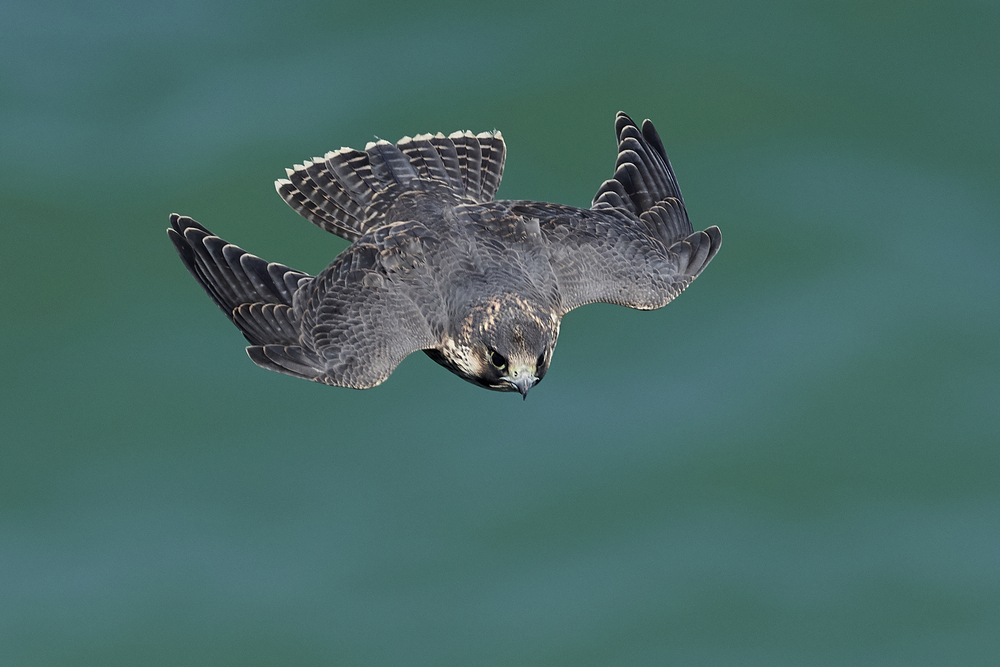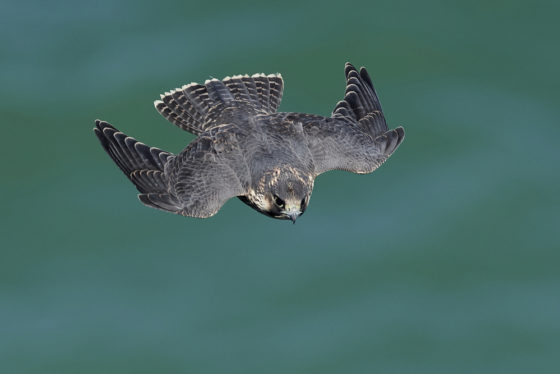Coming soon to the Rijksmuseum: young peregrine falcons


A pair of peregrine falcons which have made their home in the bell tower of the Rijksmuseum have been attracting visitors to the outside instead of the inside of the museum, the Parool reported at the weekend.
Bird spotters have been gathering in great numbers to study the movements of the falcons as they prepare to raise a family in one of the two nesting boxes provided by the museum.
‘We were enthusiastic about the birds from the start,’ the museum’s facilities manager Igor Santhagens told the paper, ‘and after reading up on them we found they catch pigeons, which is not a bad thing around here. They tear their prey to pieces and chuck what they don’t eat so we’ll have to do a bit more cleaning up.’
Experts were not sure at first about the best place to put the nesting boxes so the museum opted to install two. ‘The birds chose the one just under a bell which is a fake. The chimes are much higher up and don’t interfere with the nest. The nesting boxes had to be a certain size and have a landing platform. The view over the city from the tower is spectacular,’ Santhagen said.
The peregrine falcons are ringed which told experts that the male is from Amsterdam and the female from Brussels. ‘We think they tried to make a go of it earlier in the Rembrandt park but that it didn’t work,’ city ecologist Martin Melchers told the paper.
Melchers said the busy city centre is not necessarily a strange place to raise a peregrine family. ‘The falcons have a territory of about two square kilometers and the edges of the city have been taken. Some six pair of peregrine falcons live there at the moment and if they meet one or the other may not survive,’ he said.
The city provides plenty of food for the falcons who are formidable hunters. ‘Their top speed is 360 kilometres an hour. Their diet in the centre consist mainly of pigeon but check-ups of other nesting boxes reveal they also eat sparrows and ring-necked parakeets and even kingfishers and woodcocks.
It is not yet clear if the nesting boxes were put in place in time for the breeding season although bird spotters have seen the birds mate. Peregrine falcons usually have nests of three or four eggs which hatch after a month. The chicks stay in the nest for another month.
Peregrine falcons are also nesting in the ABN Amro office in Zuidas, the ING complex in Zuidoost and in the dockland area.
You can watch the peregrine falcons nesting on top of the ABN Amro bank building here.
Thank you for donating to DutchNews.nl.
We could not provide the Dutch News service, and keep it free of charge, without the generous support of our readers. Your donations allow us to report on issues you tell us matter, and provide you with a summary of the most important Dutch news each day.
Make a donation